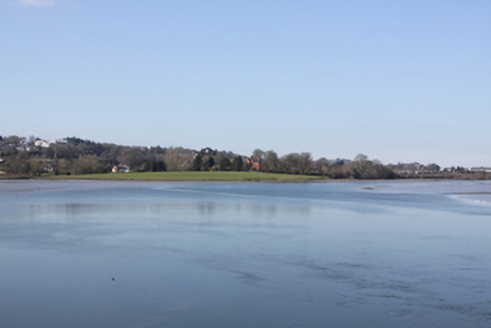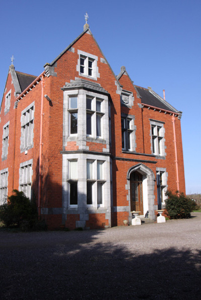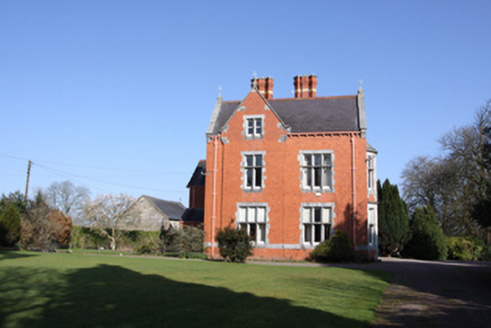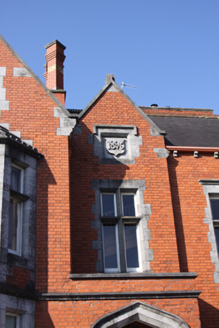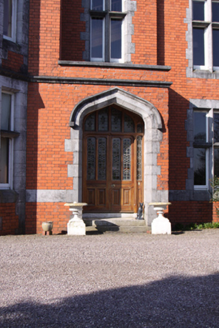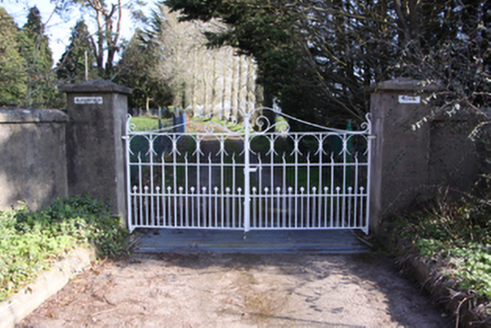Survey Data
Reg No
20872016
Rating
Regional
Categories of Special Interest
Architectural, Artistic
Original Use
House
In Use As
House
Date
1895 - 1900
Coordinates
171810, 69558
Date Recorded
15/03/2011
Date Updated
--/--/--
Description
Detached three-bay two-storey with attic Tudor Revival house, dated 1896, on site of earlier house and having advanced gable-fronted end bay with two-storey canted bay window and flat-roofed porch to east elevation and gable-fronted advanced bay to south elevation. Pitched slate roofs with crested ridge tiles, shaped corbelled red brick chimneystacks having yellow platbands, limestone coping and kneelers to gables, cast-iron finials to apexes of gables and cast-iron rainwater goods on carved limestone brackets. Red brick walls laid in Flemish bond with ashlar limestone platband and cut limestone stringcourse to porch. Carved stone plaque to east elevation bears date '1896' in raised lettering. Square-headed paired and tripartite window openings with block-and-start limestone surrounds, dressed limestone mullions, transoms and sills and timber casement windows. Tudor-arch door opening with block-and-start limestone surround, hood moulding with label stops and recessed double-leaf timber door having leaded glass to upper panels, overlight and sidelights. Door accessed via limestone steps with tiled mosaic to threshold. Set in own grounds with single-storey coursed rubble stone outbuilding to immediate north-west. Entrance to south comprises rendered square-profile gate piers having wrought-iron gates.
Appraisal
An attractive late-Victorian house built on the site of an earlier structure, also known as Bloomfield. The exterior of the building has been very little altered since its construction and retains many features of cut stonework and iron mongery which display high quality craftsmanship and produce an attractive contrast to the red brick walls. Features such as the ridge cresting, stone plaque and stained glass add artistic merit to the house. Despite the wide scale development to the surrounding area Bloomfield House has retained its immediate setting and can be seen from several locations across the Douglas estuary.
